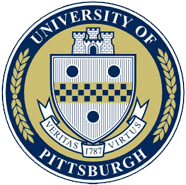Below is a summary of the abstract you submitted. Presenting author(s) is shown in bold.
If any changes need to be made, you can modify the abstract or change the authors.
You can also download a .docx version of this abstract.
If there are any problems, please email Dan at dar78@pitt.edu and he'll take care of them!
This abstract was last modified on May 7, 2018 at 3:02 p.m..

Identification of a large collection of bacteriophages infecting a single bacterial host strain reveals insights into phage evolution and diversity. The collection of actinobacteriophages contains over 13,000 phage isolates of which more than 2,500 have been sequenced. Using Gordonia terrae as a host, we isolated 307 phages from environmental samples, contributing to the overall total of over 1,100 phages isolated using Gordonia strains; 49 of these phages were sequenced. To better characterize these phages, we explored the existence of prophage-mediated defense mechanisms in the Gordonia phages, as recently reported for the Cluster N mycobacteriophages. Preliminary studies show that lysogens of phage Wizard (Cluster DC) defend against infection of 10 phages, with plating efficiencies reduced by 10<sup>-4</sup> to 10<sup>-8</sup> relative to a non-lysogenic strain. In the Wizard genome there are only three genes between the lysis cassette and the repressor, two of which (44, 46) encode predicted integrases. Gene 45 has no predicted function but is a good candidate for conferring defense against superinfection. Future efforts will be directed at sequencing the phages against which the Wizard prophage provides protection and investigating gene expression of the Wizard prophage and the phages it defends against. To further characterize the collection of newly acquired Gordonia phages isolated by Pitt students during academic year 17-18, the genomes of 49 samples were sequenced, constituting a substantial portion of the total of 297 sequenced Gordonia phages. These phage genomes span considerable diversity and are characteristically mosaic. The newly characterized phages can be assigned to 12 extant clusters (CS [6 phages], CT [1], CV [8], CY [1], CZ [10], DB [4], DC [3], DE [9], DJ [1], DL [1], DN [3], DP [1] and include one singleton (Gudmit). These phages differ in genome length ranging from 42,205 bp (Gudmit, singleton) to 90,490 bp (Daredevil, Cluster DL), and G+C% content, ranging from 50.2% (Volt, Cluster DP) to 68.5% (Leonard, Cluster DE2; G. terrae is 67.8%). Volt, along with two additional Cluster DP phages, Fryberger and Ronaldo, share very few genes with phages of other Actinobacterial hosts. Together with their relatively low G+C%, these observations suggest that the DP phages may have recently adapted to infect Gordonia, and evolved most recently from phages infecting hosts with lower G+C% than Gordonia.
